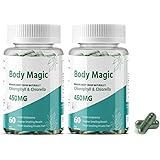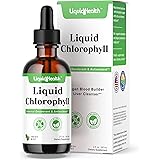The journey through alcohol withdrawal is fraught with clinical complexities, with estimates suggesting that as many as four distinct syndromes can manifest in patients with heavy, chronic alcohol use. For healthcare professionals, navigating these varied presentations, from minor discomfort to life-threatening emergencies, demands a comprehensive and evidence-based approach. The video above provides a concise “Intern Crash Course” on alcohol withdrawal syndrome (AWS), outlining its manifestations and initial management strategies. This accompanying article expands upon these critical insights, delving deeper into the pathophysiology, advanced risk stratification, and nuanced treatment protocols essential for optimal patient care.
Understanding the Spectrum of Alcohol Withdrawal Syndromes
Alcohol withdrawal syndrome is not a monolithic entity; rather, it is a continuum of symptoms reflecting a dysregulated nervous system struggling to re-establish homeostasis after prolonged exposure to alcohol. This dysregulation, largely attributed to the brain’s attempt to compensate for the suppressive effects of alcohol on excitatory neurotransmitters like glutamate and its potentiation of inhibitory GABA, results in a state of sympathetic overdrive upon cessation. The manifestation of this physiological upheaval can be broadly categorized into four primary syndromes, each with distinct clinical features and timelines.
Minor Withdrawal: The Initial Manifestations
Often the first signs of impending withdrawal, minor withdrawal symptoms typically emerge within 6 to 24 hours after the last drink. These symptoms, though termed “minor,” are anything but to the patient experiencing them. The classic presentation includes anxiety, a throbbing headache, profuse diaphoresis, a noticeable tremor, tachycardia, and heart palpitations. While the physiological basis is rooted in increased sympathetic activity, the subjective experience of intense anxiety and physical discomfort can be profound. Importantly, these symptoms can persist for up to a week, although it is uncommon for them to begin more than two to three days into a period of sobriety.
Alcoholic Hallucinosis: A Unique Presentation
Beyond the general discomfort of minor withdrawal, a more specific, albeit rarer, syndrome known as alcoholic hallucinosis can occur. This condition usually manifests between 12 and 36 hours post-cessation. Patients experience vivid hallucinations, most commonly visual or tactile, such as the disturbing sensation of insects crawling on their skin (formication). Crucially, a defining feature of alcoholic hallucinosis is the preservation of orientation; patients remain lucid, understanding that their experiences are not real. This distinction is vital for differentiating it from the global cognitive impairment seen in delirium, which signifies a much more severe and dangerous state.
Withdrawal Seizures: An Ominous Sign
The development of alcohol withdrawal seizures marks a significant escalation in severity. These seizures are typically generalized tonic-clonic, brief in duration, and followed by a short post-ictal period. They often occur between 12 and 48 hours after the last drink, though they can sometimes appear earlier. The occurrence of prolonged or focal seizures, or recurrent seizures without a significant post-ictal interval, should always prompt a thorough investigation for alternative etiologies, as these presentations are atypical for uncomplicated alcohol withdrawal. The threshold for seizure activity is lowered due to the sudden removal of chronic CNS depressant effects, leaving the brain in an overexcited state.
Delirium Tremens (DT): The Life-Threatening Crisis
The zenith of alcohol withdrawal severity is Delirium Tremens, or DT. This syndrome is mercifully uncommon but undeniably life-threatening, carrying a mortality rate of approximately 5% even with optimal treatment. DT typically presents later than other syndromes, usually 48 to 96 hours after the last drink. It is characterized by a triad of severe delirium, profound autonomic instability leading to severe tachycardia, hypertension, and hyperthermia. These patients exist in a state where their autonomic nervous system is critically unstable, akin to a runaway train without brakes, making constant monitoring and aggressive intervention paramount. Furthermore, DT often represents a progression from earlier, milder withdrawal symptoms, rather than an abrupt onset, underscoring the dynamic and evolving nature of the syndrome. Risk factors for developing DT are numerous and include a history of prior DT or withdrawal seizures, age over 30, co-existing medical illnesses, and the presence of withdrawal symptoms even while blood alcohol concentration is still elevated, indicative of extraordinarily heavy and consistent alcohol use.
Risk Stratification: Identifying High-Risk Patients
Given the wide spectrum of potential severity, effective risk stratification is a cornerstone of managing alcohol withdrawal. The ability to identify patients at high risk for severe withdrawal, particularly DT, allows for proactive admission and intensive management, ultimately improving outcomes.
The PAWSS Score: Prediction of Alcohol Withdrawal Severity Scale
The Prediction of Alcohol Withdrawal Severity Scale (PAWSS) is the most thoroughly validated tool for this purpose. The PAWSS score is designed to identify patients at high risk for severe alcohol withdrawal, guiding decisions regarding inpatient versus outpatient management. The scoring system begins with a critical initial screening: has the patient consumed alcohol within the last 30 days, or is there a positive blood alcohol level (BAL) upon admission? A ‘yes’ to either question grants the first point and mandates administering the rest of the 10-point scale.
Additional points are accrued for:
- At least one prior withdrawal episode
- A history of withdrawal seizures
- A history of Delirium Tremens
- Any prior alcohol rehabilitation treatment
- Experiencing alcohol-related blackouts
- Combined alcohol with benzodiazepines or barbiturates within the last 90 days
- Combined alcohol with any other substances of abuse within the last 90 days
- A BAL on admission exceeding 200 mg/dL
- Already experiencing minor withdrawal symptoms
Admission Criteria: When Inpatient Management is Imperative
The decision to admit a patient for alcohol withdrawal management is multifactorial and heavily weighted by the potential for severe complications. While outpatient management is feasible for low-risk individuals, several clear indicators necessitate an inpatient admission.
Foremost, the patient’s explicit desire to abstain from alcohol is paramount. Without this stated commitment, the risks of inpatient withdrawal management may outweigh the benefits, particularly if the patient is likely to relapse immediately post-discharge. If this desire is present, further criteria guide the admission decision:
- A PAWSS score of 4 or greater.
- Any history of withdrawal seizures or Delirium Tremens.
- Symptoms of withdrawal presenting while the blood alcohol level is still elevated, which indicates a profound level of physiological dependence.
- Baseline cognitive impairment that would preclude the safe, independent use of outpatient benzodiazepines.
- Unstable psychiatric disease, where the stressors of withdrawal could exacerbate underlying conditions.
- An inability to attend daily or near-daily appointments during the critical withdrawal period, typically lasting 5-7 days.
Pharmacological Management: Benzodiazepines as First-Line Therapy
Benzodiazepines are unequivocally the first-line treatment for all forms of alcohol withdrawal, serving as the pharmacological cornerstone of management. Their efficacy stems from their ability to potentiate the effects of gamma-aminobutyric acid (GABA), the primary inhibitory neurotransmitter in the central nervous system. By mimicking alcohol’s inhibitory effects, benzodiazepines help to dampen the hyperexcitable state of the brain, mitigating symptoms and preventing the progression to more severe syndromes.
The Cornerstone of Treatment
Benzodiazepines provide symptomatic relief by restoring a more balanced neurotransmitter milieu. They effectively reduce anxiety, diminish tremor, prevent seizures, and control autonomic instability. The choice of which benzodiazepine to use is often dictated by its pharmacokinetic profile, routes of administration, and specific patient comorbidities.
Commonly Utilized Benzodiazepines in AWS
In the US, three benzodiazepines are predominantly employed for alcohol withdrawal management:
- Diazepam (Valium): This agent boasts the fastest onset of action among the three, a relatively long half-life due to active metabolites, and is available in both intravenous (IV) and oral (PO) formulations. Diazepam is often considered the go-to benzodiazepine for many patients in acute withdrawal, especially for rapid symptom control. Typical initial doses are 5 to 10 milligrams IV or PO, with the IV form repeatable every 5 to 10 minutes until the patient is calm, easily arousable, and able to converse. Its long half-life provides a smoother taper and reduces the risk of interdose withdrawal.
- Lorazepam (Ativan): With a relatively shorter half-life and no active metabolites, lorazepam provides a less “smooth” clinical course than diazepam but offers a critical advantage in patients with hepatic dysfunction. Due to differences in its metabolic pathway (glucuronidation rather than oxidative metabolism), it is generally considered safer for patients with cirrhosis or alcoholic hepatitis, where impaired liver function might prolong the action of other benzodiazepines. It is available both IV and oral. Initial doses typically range from 2 to 4 milligrams IV or PO, with IV doses repeatable every 15 to 20 minutes as needed.
- Chlordiazepoxide (Librium): Like diazepam, chlordiazepoxide is long-acting, but it is available only in an oral form. This makes it a preferred agent for outpatient management of withdrawal, often prescribed as a short, fixed taper over several days. Initial oral doses are typically 25 to 100 milligrams, which can be repeated as frequently as every 2 to 3 hours as needed during the acute phase of an outpatient taper. Its long duration of action helps prevent rebound withdrawal symptoms.
Symptom-Triggered Dosing: The CIWA-Ar Protocol
The paradigm for benzodiazepine dosing has evolved significantly. Historically, a fixed-schedule approach with a pre-determined taper was common. However, clinical studies and experience have overwhelmingly demonstrated the superiority of a symptom-triggered approach. This strategy leads to equivalent or even better outcomes, often with a shorter overall treatment duration and reduced cumulative benzodiazepine dose, minimizing side effects like over-sedation.
The cornerstone of symptom-triggered therapy is the Clinical Institute Withdrawal Assessment for Alcohol, Revised (CIWA-Ar) scale. This standardized scoring system objectively quantifies the severity of withdrawal symptoms across 10 clinical criteria, including anxiety, tremor, headache, orientation, diaphoresis, and hallucinations. Each criterion is assigned a score from 0 to 7. A total score less than 8 generally indicates minimal withdrawal, while a score over 20 signifies severe withdrawal. Many hospitals implement protocols where nursing staff assess the patient’s CIWA-Ar score at fixed intervals (e.g., hourly upon admission) and administer a specific dose of benzodiazepine if the score falls within a pre-defined range. As symptoms improve and scores fall below a certain threshold for a specified number of hours, the frequency of assessment and medication administration is incrementally decreased. This automatized approach empowers nursing staff, streamlines treatment, and most importantly, facilitates more expedited and tailored therapy, ensuring patients receive medication precisely when needed and avoid unnecessary sedation.
Managing Refractory Alcohol Withdrawal and Alternative Strategies
While benzodiazepines are highly effective for most cases of alcohol withdrawal, a minority of patients, particularly those with severe DT, may prove resistant to conventional dosing regimens. These are often the most challenging cases, demanding advanced interventions.
When Benzodiazepines Fall Short
For patients with refractory Delirium Tremens who do not respond to high-dose intermittent benzodiazepine therapy, several alternative strategies may be employed:
- Continuous Benzodiazepine Infusions: A constant intravenous infusion of a benzodiazepine, such as lorazepam or midazolam, can provide steady-state sedation and withdrawal control, allowing for precise titration.
- Propofol: A potent general anesthetic, propofol provides rapid and profound sedation. It acts on GABA receptors but through a different mechanism than benzodiazepines, making it effective in some refractory cases. Its use often necessitates intubation and mechanical ventilation due to its respiratory depressant effects.
- Phenobarbital: This barbiturate enhances GABAergic activity and has antiepileptic properties. It offers a broad spectrum of CNS depression and can be effective when benzodiazepines alone are insufficient. Similar to propofol, it can cause respiratory depression and may require airway management.
- Dexmedetomidine: An alpha-2 adrenergic agonist, dexmedetomidine provides sedation and anxiolysis without significant respiratory depression, making it a valuable adjunct, particularly for managing autonomic hyperactivity in DT. It can reduce the need for high-dose benzodiazepines.
Benzo-Sparing Protocols: An Emerging Area
A minority of experts have explored and advocated for treatment protocols that aim to reduce or avoid the routine use of benzodiazepines, often referred to as “benzo-sparing” protocols. These protocols may incorporate medications such as clonidine (an alpha-2 adrenergic agonist), dexmedetomidine, valproic acid (an antiepileptic), and gabapentin (a GABA analogue). While these agents can help manage specific symptoms of withdrawal (e.g., clonidine for autonomic hyperactivity, gabapentin for anxiety and seizure threshold), robust trial data demonstrating their efficacy as monotherapy or their superiority over benzodiazepine-based regimens are currently lacking. Therefore, their routine use as primary treatment for alcohol withdrawal syndrome cannot be universally recommended at this time, though they may serve as useful adjuncts.
Beyond Pharmacotherapy: Comprehensive Supportive Care and Comorbidities
Effective management of alcohol withdrawal extends far beyond pharmacological interventions. Comprehensive supportive care and diligent identification and treatment of comorbid conditions are equally critical for ensuring patient safety and promoting long-term recovery.
Crucial Supportive Measures
The physiological stress of alcohol withdrawal, compounded by chronic alcohol abuse, leaves patients vulnerable to a range of complications that demand proactive supportive care:
- Intravenous Fluids: Dehydration is common due to diaphoresis, vomiting, and inadequate oral intake. IV fluids are essential for maintaining hydration and electrolyte balance.
- Thiamine Supplementation: Chronic alcohol use leads to thiamine deficiency, which, if uncorrected, can precipitate Wernicke’s encephalopathy—a severe neurological emergency. Crucially, thiamine should always be administered *before* any glucose-containing IV fluids. Administering glucose first can deplete the remaining thiamine reserves, thereby triggering or worsening Wernicke’s encephalopathy.
- Correction of Electrolyte Derangements: Hypomagnesemia, hypokalemia, and particularly hypophosphatemia are common in alcohol withdrawal and can exacerbate cardiac arrhythmias, seizures, and muscle weakness. Aggressive repletion is often required.
- Nutritional Support: Many patients with chronic alcohol use are malnourished. Providing adequate nutritional support is vital for recovery and overall health.
Addressing Concurrent Medical and Psychiatric Conditions
Patients experiencing alcohol withdrawal frequently present with a multitude of co-occurring medical and psychiatric conditions, which can complicate management and influence prognosis. A thorough evaluation to identify and treat these comorbidities is non-negotiable. An incomplete, yet illustrative, list includes:
- Alcohol-Related Liver Disease: Ranging from fatty liver to alcoholic hepatitis and cirrhosis, this affects drug metabolism and overall physiological resilience.
- Alcoholic Gastritis: Inflammation of the stomach lining, often causing nausea, vomiting, and abdominal pain.
- Aspiration Pneumonia: A risk due to altered mental status, vomiting, and impaired gag reflex during acute intoxication or severe withdrawal.
- Pancreatitis: A painful and potentially life-threatening inflammation of the pancreas, frequently triggered by heavy alcohol consumption.
- Psychiatric Disease: High rates of depression, anxiety disorders, and other psychiatric illnesses often co-occur with alcohol use disorder, requiring integrated management.
- Various Neurological Complications: Chronic heavy alcohol use can lead to long-term neurological damage, including alcoholic dementia, cerebellar degeneration (ataxia), and peripheral neuropathy. These conditions can significantly impact recovery and quality of life.
Understanding the Road Ahead: Your Alcohol Withdrawal Questions Answered
What is alcohol withdrawal syndrome?
Alcohol withdrawal syndrome (AWS) is a range of symptoms that occur when someone with heavy, chronic alcohol use suddenly stops or reduces drinking. It happens because the brain tries to adjust after prolonged exposure to alcohol’s effects.
What are some common signs of minor alcohol withdrawal?
Minor withdrawal symptoms usually start within 6 to 24 hours after the last drink and can include anxiety, headache, sweating, tremors, a fast heart rate, and heart palpitations.
What is the most severe form of alcohol withdrawal?
The most severe and life-threatening form is Delirium Tremens (DT), which typically appears 48 to 96 hours after the last drink and involves severe confusion, profound shaking, and dangerous changes in body functions like heart rate and temperature.
How is alcohol withdrawal usually treated?
Benzodiazepines are the main treatment for alcohol withdrawal, as they help calm the overexcited brain, reducing symptoms like anxiety, tremors, and the risk of seizures.
What is the CIWA-Ar scale used for in alcohol withdrawal?
The CIWA-Ar scale is a tool used by healthcare professionals to measure the severity of a patient’s alcohol withdrawal symptoms. This score helps determine how much medication, like benzodiazepines, is needed and when to give it.











